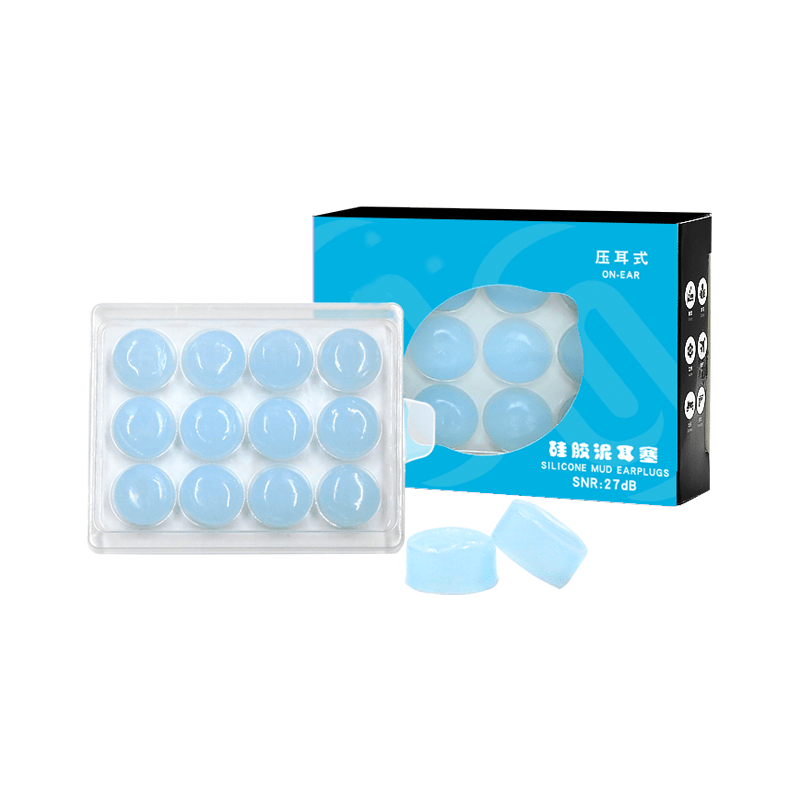How to wear swimming earplugs?
People who love swimming may have felt this way. When swimming, water will enter their ears. After a long time, they will feel pain and discomfort around their ears, making people feel headache and dizziness. In addition, the chemical bleach, precipitant and filter contained in the pool water will cause greater damage to people’s eyes, nose and ears.
Therefore, people with ear sensitivity and ear diseases had better wear earplugs, especially those who like diving, to minimize the damage of water pressure to their ears. Now, let’s learn the correct way to wear swimming earplugs.
Types of earplugs on the market:
| Silicone gel earplugs | silicone earplugs | |
 |  | |
| Circulability | Durable consumables can be used for many times on the premise of ensuring hygiene | Anti aging, can be used for many times |
| Comfort | Patented plastic silicone, fully fitted, extremely comfortable | High grade silicon-based plastic, good fitting and comfortable |
| Waterproof effect | Very good | Very good |
| Security | Material inspection safety report, CE certification | CE certification |
| Multipurpose | Waterproof for swimming and bathing,noise reduction | Waterproof for swimming and bathing |
| Comprehensive cost performance | Extremely high | High |
Silicone earplugs
For earplugs worn for swimming, elastic earplugs are the most comfortable and waterproof. However, due to its elasticity, it will compress the ear canal and cause minor discomfort. At the same time, due to the use of materials similar to sound insulation earplugs, the sound insulation effect is too good, and some unexpected situations may occur in the swimming pool.
Plastic ear hook earplugs
Earplugs with earrings are generally added to the Christmas tree type earplugs. In this way, the earrings are more stable because of the earrings, and the risk of falling and losing is relatively small. However, because the earrings are added, there are some problems in the connection between different materials. Generally, there is no sound guide cavity, and the sound insulation effect will be better. It also has the advantages and disadvantages of Christmas tree earplugs.
Ear plugs with pinna
On the basis of mushroom earplugs, this kind of earplug reduces the size of the subject and adds a silicone cap fitting the auricle, which greatly improves the wearing comfort, but at the same time reduces the applicable population. Not all auricles can adapt and use this kind of earplug. Moreover, because the main body is reduced and there is no sound guide cavity, the sound insulation effect is better, and it is no longer applicable when sound insulation is not required.
Christmas tree earplugs
Christmas tree earplugs are also very common because of their low cost and low price. Earplugs are generally silicone caps with layers or more, which have good waterproof effect and can better adapt to the ear canal. However, because of the stratification, the front end of this kind of earplug is relatively fragile and easy to fall into the ear canal, which also has a certain probability of causing inflammation and so on. Because there are many layers, the earplugs have greater damage to the ear canal. When using and taking out, the inner ear canal will be scratched due to multiple layers. This kind of earplug is not recommended for long-term use.
Mushroom earplugs
Mushroom earplugs are a common style. This style has a good waterproof effect and is more comfortable because it is soft. And because the main body of this earplug is relatively thick, it is generally made into a hollow earplug, which has the effect of conducting sound and will not affect normal listening. It is more suitable for multiple people to practice or for learners when someone is teaching.
How to wear earplugs
When wearing, first rub or thin the earplug, quickly insert the earplug into the ear canal, and lift the ear upward as shown in the figure, so as to insert the earplug to the maximum.
Insert the smaller end of the earplug into your ear according to your comfort level. When using earplugs, gently pull the ear back and up slightly, and then insert the earplugs. In fact, you just need to press it inside. Press the back edge of the earplug with your fingernail, and press it several times to go in.
